(Initially published in the Winter 2009 ATransC NewsJournal)
Abstract
This study is based on the question of whether or not a practitioner’s ability to record for EVP can be influenced by the use of binaural-beat synchronization of mental processes. According to research conducted by The Monroe Institute (TMI), neuron activity in the two hemispheres of the brain are synchronized with and entrained to the beat-frequency between left and right audio signals supplied to the ears via a stereo headset. A slowly changing beat-frequency can change this synchronization, known by TMI as a “frequency-following response,” so that the listener experiences meditative-like states of awareness. A CD containing a frequency set designed for meditation and a CD containing the same set of frequencies plus a set intended to facilitate access to what TMI refers to as an “inner-self helper” were used. The CDs were only labeled as “A” and “B.” Volunteer EVP practitioners were asked to conduct a series of ten recording sessions using each CD and make a self-evaluation of any changes from their expected success rate. No appreciable change in success rate was reported by the volunteers.
Introduction
Association TransCommunication has conducted a study to determine whether or not the use of binaural synchronization can improve a person’s ability to record for EVP. Two audio CDs were used by each participant. One included a set of frequencies developed by The Monroe Institute (TMI) designed to facilitate meditation. The other was the same but included additional frequencies derived from analysis of a functioning trance-channel. (This technology is referred to as “Hemi-Sync®” by TMI.) (See The Monroe Way for background.) Here is a summary of the results:
Protocol
These are the instructions each participant received.
Overview
The objective of this experiment is to evaluate the effect binaural synchronization has on the quality and quantity of EVP. Monroe Institute Hemi-Sync® technology will be used.1 See the attached article, The Monroe Way.
What is in the kit?
You have been assigned a tracking number, and all of your results will be recorded by that number rather than by your name until after the results have been evaluated.
Audio Recorder
You are all being asked to use the same equipment and technique. If you have not indicated that you already have a Sony ICD-B26 digital voice recorder that you will use, one will be mailed to you in a separate package.
Assumptions
It is assumed that:
- You have an audio patch cable and know how to connect a recorder to your computer and how to record the audio into the computer.
- You have an audio management program and know how to use it for audio capture, editing and saving.
- You have a audio CD player that you can use for these sessions.
- You have a set of headphones that you can use.
If this is not the case, please contact us before beginning the trials.
Memory Storage
A USB thumb drive has been included in the kit. You are asked to use the memory device as a means of returning your recordings to the AA-EVP. The SanDisk memory stick has a folder named Documents which contains the folders:
2008 Hemi-Sync Trials
mp3 and wav formats of the Hemi-Sync CDs A and B
2008 Hemi-Sync Trials Results
Twenty folders for storing the results of twenty sessions.
The other folders are empty
A “U3” icon will appear in the bottom-right tray. Click on that and click on the “Eject” button before removing the memory stick from you computer. A window will tell you when it is okay.
Audio CD
Two 36 minute audio CDs have been included. One is marked with a large “A” and one with a large “B.” These are the sound files containing the Hemi-Sync tones and what you will be listening to for the EVP recording sessions.
Notepad
A notepad has been included and you are asked to keep notes related to this experiment. When you listen to the resulting audio files, you will be asked to note what you hear and how well possible EVP agree with what was expected, and provide a brief description of how you feel about the circumstances.
Instructions
A set of instructions have been included, which explain the protocol.
Protocol
Please conduct twenty recording sessions during which you will make three one-minute recordings for EVP. Since Hemi-Sync leads your level of awareness to a deeply relaxed state, and the sessions are nearly forty minutes long, it is recommended that you conduct only one session in a six hour period. You are asked to complete all twenty session in three months, and to do this, you will need to average slightly more than three sessions every two weeks.
Please do not listen to Hemi-Sync while driving or during activity that requires your full attention. Just as with meditation, be sure that you are fully alert after using Hemi-Sync.
To begin
Copy the 2008 Hemi-Sync Trials Results folder from the memory stick to your computer. You will use the folders to store session recordings.
Find a comfortable location where you are not likely to be disturbed. A relaxed sitting position with a pillow to support your head and a throw to keep your body comfortable is recommended. You will want to be able to hold or pick up the recorder and turn it on to the record mode three times while you are very relaxed. You may also want to make written notes. (If you record verbal notes for future transcription, please use a second recorder.)
If you prefer, you can use the files in the memory stick to play the sessions through an mp3 player or directly from your computer. The native format is the one on the CD, so it is first choice. The objective is to have the highest quality playback, but the second objective is to have all session played on the same device.
Test the equipment and make sure that your recorder, player and headset are all functioning correctly. The two CDs are identical except one has an added set of Hemi-Sync frequencies intended to help you function as a mental medium. Listen to one of them all the way through so that you will know what to expect. Take advantage of this session to set the levels in your player and in the recorder. The alert tones in the CDs are a little softer than expected so you will want to turn up the volume in the player so that you will not miss them.
Each CD is arranged as:
0:00 — 10:00 Intro surf and up to working level
10:00 Record now sound
11:00 Stop recording sound
Return to working level
20:00 Record now sound
21:00 Stop recording sound
Return to working level
30:00 Record now sound
31:00 Stop recording sound
Brief return to working level
34:00 — 36:13 Return to C1 verbally guided
36:14 — 36:15 Silence
Questions
Before beginning a session, think of three questions you will ask and/or who you wish to contact. Begin a fresh page in the notebook with:
- Date
- Time you expect to begin
- Current weather conditions
- Session Number
- Write a brief comment about your sense of wellbeing, energy level and attitude about the session.
- Leaving space between each question for further comment, write what you will ask or say to the etheric communicators.
- Write down the number in the recorder that will be associated with the three recordings for this session.
It is important to use questions that are meaningful to you so as to draw on your personal energy and focus. If you have a loved one in the etheric, you could ask for a personal message. Think of the kind of questions you have had success receiving results for in the past. The questions should be interesting to your communicator, as well. For instance, experience has shown that asking the same question session after session is met with fewer and fewer responses and maybe even complaints. The entities are pretty good at telling you what they have seen in your home, so you could put something on a table and ask what it is (a teddy bear or plant would be better than a rock). You could also ask them to tell you what you are wearing.
During the session
Make yourself comfortable so that your head is supported and there are no pinch points that will cut off circulation to an arm or leg. Your body will cool down during the session, so you may want to have a throw nearby. The Hemi-Sync tones will “take” you to a meditative level of consciousness. All you have to do is relax and enjoy the trip. If you have an itch, scratch it. If you need to reach for the throw, do so. The tones will gently take you back to level.
Think about your question. Visualize who it is that you wish to hear from. Desire to record the response you are hoping for. When you hear the “record now sound” turn on the audio recorder and say out loud your question or request so that it will be recorded, and then remain quiet until you hear the “stop recording sound.” When you do hear the tone, turn off the recorder and allow the tones to take you back to level. Be brief so that there is time for the EVP.
Begin thinking about your next question or request and repeat this process for two more record periods. After the third period, relax and allow the narrator to count you back to full consciousness. It is a good idea to express your appreciation for your communicators and tell them that you would like their help next time, as well.
Number of sessions
Please conduct twenty sessions beginning with the CD marked “A” and the next with the one marked “B” and then alternate between the two so that every other session will be with CD “A,” ending with CD “B” for session twenty.
Each session has three recording periods for a total of sixty one-minute recordings.
Analysis of the recordings
Copy the recordings into your computer and save them as a Windows PCM (*.wav) file (or Apple equivalent). If you are using Audacity, then “Export as a wav” file. The recorder will hold more than 60 minutes, so please save the files in the recorder, as well. Be sure to lock the recorder when you have finished.
Label the files in your computer as EVP Folder > 2008 Hemi-Sync Trials folder and then:
Your number-Session 1–CD A period 1
Your number-Session 1–CD A period 2
Your number-Session 1–CD A period 3
Your number-Session 2–CD B period 1
and so on for all 20 sessions and 60 recording periods for a total of 60 files.
During analysis, you will be looking for EVP, how many per one minute session and what you think of their relevance to your question. Please make a record of the results in the provided notebook. This is not a contest for the most EVP or most meaningful responses. The objective is for you to decide if an EVP has been recorded using the same standard as you have used in the past.
Assessment of results
After finishing the last (20th) session, please answer the following questions in the provided notebooks:
- Please describe your playback setup and environment.
- Did you record EVP during the Hemi-Sync sessions?
- If so, explain your view of the results.
- Did you notice any difference between the Hemi-Sync sessions and past experience in your usual quantity and quality of EVP?
- If so, please explain.
- Please pick one of the following:
- I saw no change in my ability to record EVP between the Hemi-Sync sessions and my normal sessions.
- I saw a slight change in my ability to record EVP, but the Hemi-Sync did not seem to be the reason.
- There was considerable change in my ability to record EVP when I used Hemi-Sync.
- True or False: I now prefer using Hemi-Sync for my EVP sessions.
- True or False: I would recommend Hemi-Sync for anyone wanting to improve their ability to record EVP.
- How would you change the protocol for this kind of experiment?
- Please provide a statement of how you feel/felt about this experiment. Do you see value in this sort of effort? Did you benefit by participating?
Finish
Please save the sixty sound files into the USB memory stick provided in the kit, and return that and the audio recorder, the two CDs and note pad to the AA-EVP. It is important that the recorder is returned so that future experiments may be conducted using the same hardware.
Thank you very much for participating in this experiment. We will give you a report about our findings as soon as we can finish the data reduction.
- The Monroe Institute, 365 Roberts Mountain Road, Faber, Virginia 22938, 1-866-881-3440, 434-361-1252, www.monroeinstitute.com.
Results
The short report is that the study did not produce evidence that use of binaural synchronization improves Quality and Quantity (QQ) of EVP.
Ten people participated in the study. All used the same type of recorder, but background sound, where they recorded and when was optional. Six kits were returned completed and two returned blank. As of this writing, two were not returned. An eleventh participant withdrew before beginning because they found the tones irritating.
No obvious trend was evident after the resulting QQ of EVP was assessed and the opinions of the participants were considered. It was felt by some that they did better using their own recorder and using their more usual techniques. Most liked Hemi-Sync as an aid for meditation, although some found it too difficult to remain sufficiently alert to record during the allotted times.
Conclusion
Hemi-Sync is very effective in facilitating meditation. This experiment was inspired by the personal experience that it also facilitates mental mediumship. Not knowing what makes an effective EVP practitioner, it seemed reasonable to test whether or not what worked for mental mediumship would work for EVP, which is thought to involve essentially the same process.
The results of this trial must be considered inconclusive. An improvement in QQ was not evident, which is the necessary measure; however, the experiment itself was not conducted in a manner that allows reasonable assessment of the technology. Please see the “Recommendations”
Sincere thanks to the volunteer practitioners: Vicki Talbott, Richard Shenk, Keith Clark, Leslie Taylor, Billy Deluca and Teri Daner for their hard work to complete the experiment. We learned much that will guide us on to new efforts.
Recommendations
The experiment should be conducted in controlled conditions in which participants can be monitored, and the results can be more formally reported. The sound files lacked an induction process that might help a person have a better sense of the process and more effectively set listening levels. The record begin and end sounds were often missed. Participants should also be familiarized with Hemi-Sync for a time before beginning the series of experiments.
It is our belief that binaural synchronization may be an effective tool for improving QQ, but it is clear that more qualified researchers need to be involved. This study involved a complex protocol, many recording sessions conducted by volunteer practitioners and very poorly designed sound files. Meditating with Hemi-Sync is a pleasurable experience, but this assessment is based on the CDs available from The Monroe Institute. By comparison, the ones provided for this study did little to give the practitioner a sense of “induction.”
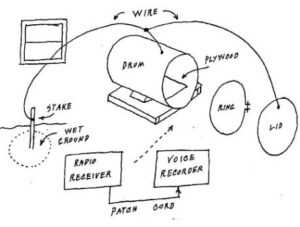
 Parapsychologist, Professor Charles Tart, was interviewed by The Psychic Times (apparently defunct), a new British publication that is already proving itself antagonistic to EVP. In the article, Tart was quoted to argue that EVP is stray radio, and that we who study in this field have not demonstrated the necessary research discipline to produce the kind of credible evidence that he can take to other scientists.
Parapsychologist, Professor Charles Tart, was interviewed by The Psychic Times (apparently defunct), a new British publication that is already proving itself antagonistic to EVP. In the article, Tart was quoted to argue that EVP is stray radio, and that we who study in this field have not demonstrated the necessary research discipline to produce the kind of credible evidence that he can take to other scientists.


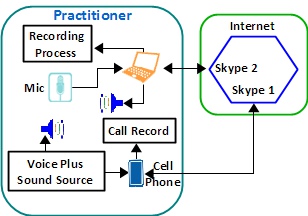
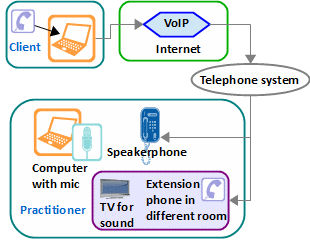


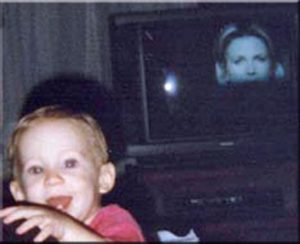
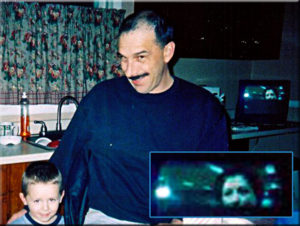

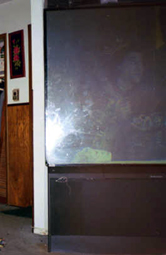
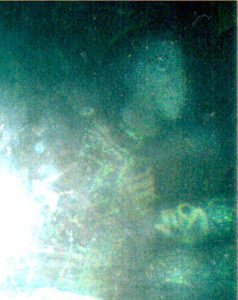
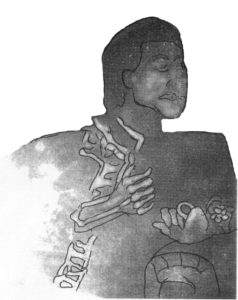
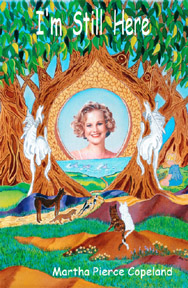



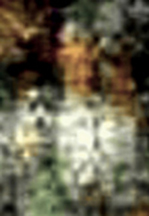 Experiments have shown that it is possible to deliberately record the thoughts of sleeping people–even to solicit meaningful comments about what the experimenter is doing far in another part of the world. This is reasonable because while sleeping or in some way mentally disengaged from the physical, we are pretty much the same as the etheric entities we communicate with via EVP.
Experiments have shown that it is possible to deliberately record the thoughts of sleeping people–even to solicit meaningful comments about what the experimenter is doing far in another part of the world. This is reasonable because while sleeping or in some way mentally disengaged from the physical, we are pretty much the same as the etheric entities we communicate with via EVP.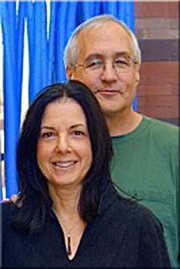
 Dr. Stephen Braude has been conducting intensive research into the physical mediumship of the Felix Experimental Group (FEG) under controlled conditions. You have seen reports in this NewsJournal about the FEG medium and
Dr. Stephen Braude has been conducting intensive research into the physical mediumship of the Felix Experimental Group (FEG) under controlled conditions. You have seen reports in this NewsJournal about the FEG medium and 
 In October 2003 we gave a workshop at the
In October 2003 we gave a workshop at the  In early November of 2003 we conducted an investigation in the Thunderbird Lodge at Lake Tahoe, Nevada with Janice Oberding (
In early November of 2003 we conducted an investigation in the Thunderbird Lodge at Lake Tahoe, Nevada with Janice Oberding ( The next day we were all in the car, making the drive to the antique store. The first thing that we asked after meeting the owner was if she knew anything about Spiritualism. She answered, “Have you ever heard of the Reverend Florence Becker?” We learned from the ensuing conversation that her mother had lived near San Francisco and attended Reverend Becker’s sittings in the late 1950s. The daughter felt that the painting was from the late 1800s but the painting is not signed or dated. The Becker painting is dated 1916 and signed by the spirit artist, Rapierre.
The next day we were all in the car, making the drive to the antique store. The first thing that we asked after meeting the owner was if she knew anything about Spiritualism. She answered, “Have you ever heard of the Reverend Florence Becker?” We learned from the ensuing conversation that her mother had lived near San Francisco and attended Reverend Becker’s sittings in the late 1950s. The daughter felt that the painting was from the late 1800s but the painting is not signed or dated. The Becker painting is dated 1916 and signed by the spirit artist, Rapierre.

 “In the summer of 2005…. an Italian friend of mine from Toronto told me about an Italian singles web site and that I should check it out. I really wasn’t interested, but the allure of only Italians captured me, so I went on to take a peek. Well, you actually had to have a profile posted to look. I placed a very tough personal ad on that web site. I think a lot of men were afraid to contact me … I justified my tough profile by knowing who I am, what I want and what type of men I blend best with and also I needed only the very strong to send me emails, as I have issues with my oldest son … who is ill…. Most men would not be interested in a relationship with a woman that has a twenty-seven year-old hanging around all the time. So, I knew that this Italian web site would just be for fun.
“In the summer of 2005…. an Italian friend of mine from Toronto told me about an Italian singles web site and that I should check it out. I really wasn’t interested, but the allure of only Italians captured me, so I went on to take a peek. Well, you actually had to have a profile posted to look. I placed a very tough personal ad on that web site. I think a lot of men were afraid to contact me … I justified my tough profile by knowing who I am, what I want and what type of men I blend best with and also I needed only the very strong to send me emails, as I have issues with my oldest son … who is ill…. Most men would not be interested in a relationship with a woman that has a twenty-seven year-old hanging around all the time. So, I knew that this Italian web site would just be for fun.
 Anabela Cardoso has published the ITC Journal (
Anabela Cardoso has published the ITC Journal (
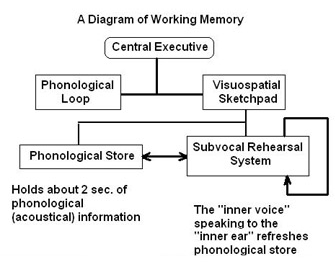 But in April we began to lose some of the response categories. There were no in-context responses to some of the questions. Were they losing interest in those questions?
But in April we began to lose some of the response categories. There were no in-context responses to some of the questions. Were they losing interest in those questions?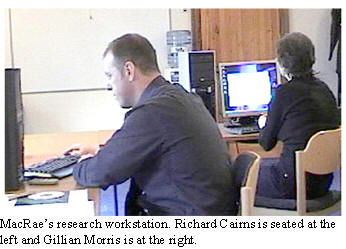 Trying to make sense of this required a great deal of analysis, and I will try to compress this, in what follows.
Trying to make sense of this required a great deal of analysis, and I will try to compress this, in what follows.

 Over the three-and-one-half years since our son Nicky passed, we have had sittings with many wonderful and talented mediums. Just like finding a doctor, you need to feel comfortable with the person who is facilitating communication with your loved one. You need to have faith and to be open to any and all messages. Our experiences have been both fruitful and very comforting.
Over the three-and-one-half years since our son Nicky passed, we have had sittings with many wonderful and talented mediums. Just like finding a doctor, you need to feel comfortable with the person who is facilitating communication with your loved one. You need to have faith and to be open to any and all messages. Our experiences have been both fruitful and very comforting.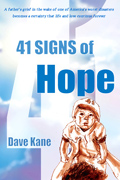 Nicholas O’Neill made his transition in The Station nightclub fire in West Warwick, Rhode Island. At eighteen, he was the youngest victim. Nick, a songwriter, singer, musician, comedian and all around entertainer, had been invited to hang out with the Great White band the day of the show that ended in one hundred deaths. In the ensuing months and years since his crossing, his parents have been amazed by the many messages that have come from him. Many of these events center on the number forty-one, a number of great significance in Nicky’s life. Dave Kane, Nicky’s father, who is a well-known radio personality and talk-show host, has written an inspiring book about the family’s continued relationship with Nicky titled, 41 Signs of Hope,
Nicholas O’Neill made his transition in The Station nightclub fire in West Warwick, Rhode Island. At eighteen, he was the youngest victim. Nick, a songwriter, singer, musician, comedian and all around entertainer, had been invited to hang out with the Great White band the day of the show that ended in one hundred deaths. In the ensuing months and years since his crossing, his parents have been amazed by the many messages that have come from him. Many of these events center on the number forty-one, a number of great significance in Nicky’s life. Dave Kane, Nicky’s father, who is a well-known radio personality and talk-show host, has written an inspiring book about the family’s continued relationship with Nicky titled, 41 Signs of Hope,